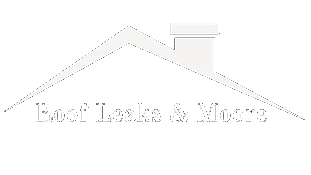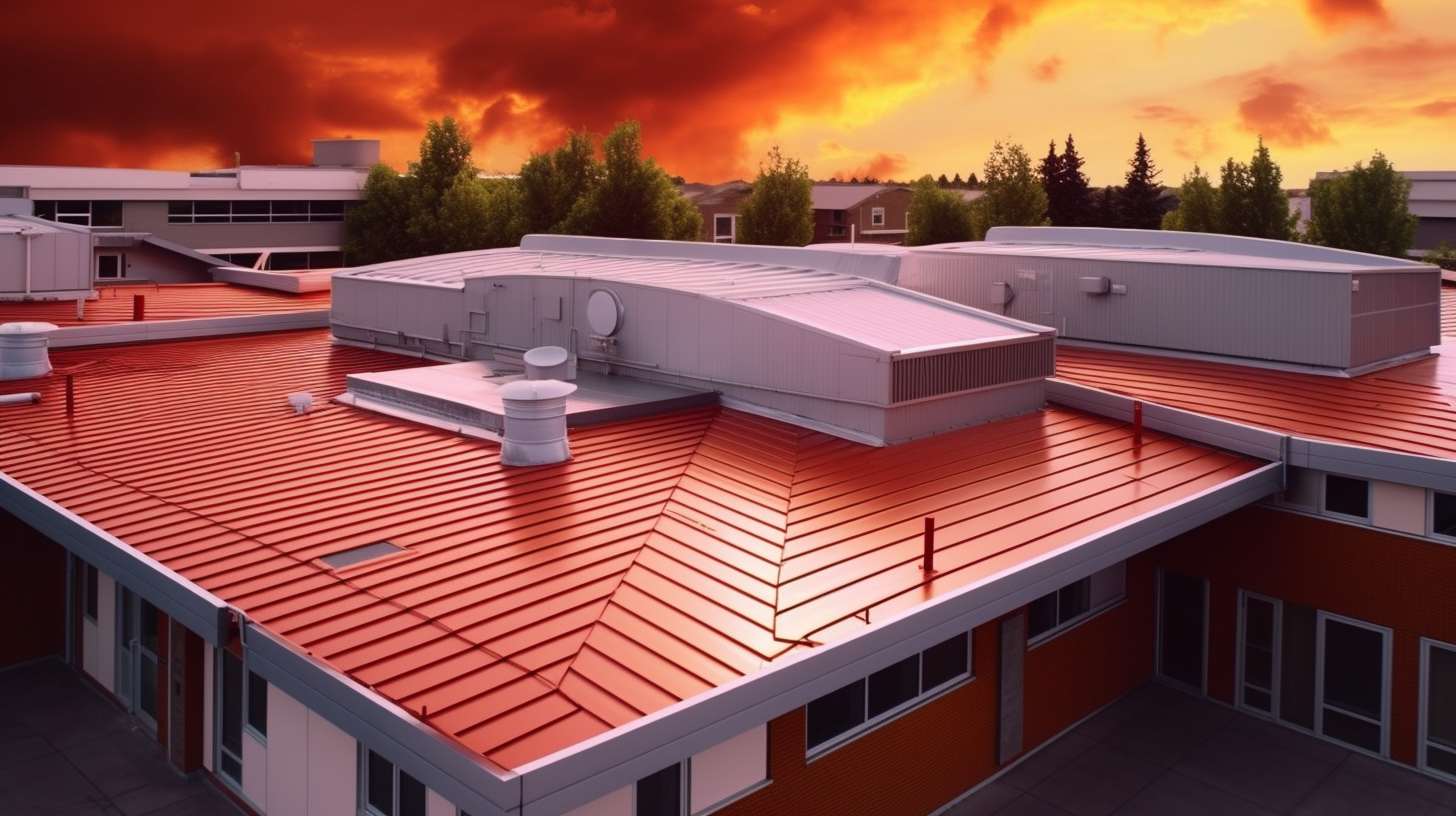Did you know that in 2019, there were 5,350 fires in healthcare facilities in the United States? These fires caused 25 civilian deaths, 161 civilian injuries, and $70 million in property damage.
Healthcare facilities are critical spaces where lives are saved and improved, but they also present unique hazards. That’s why it’s crucial to ensure that your healthcare facility is equipped with fire-rated roofing materials to protect your patients, staff, and property.
Fire-rated roofing materials are designed to resist fire and prevent it from spreading. They are an essential component of any healthcare facility’s fire safety system. Choosing the right fire-rated roofing material can be daunting, but it’s essential to ensure the safety of your patients and staff.
In this article, we’ll explore the importance of fire-rated roofing materials in healthcare facilities, the types of fire-rated roofing materials available, factors to consider when choosing them, and how to install and maintain them. By the end of this article, you’ll have a better understanding of how to ensure the safety of your healthcare facility with fire-rated roofing materials.
Importance of Fire-Rated Roofing Materials in Healthcare Facilities
You need to make sure that your healthcare facility has fire-rated roofing materials to ensure the safety of your patients, staff, and visitors in case of a fire. Fire safety is a crucial aspect of any healthcare facility, and fire-rated roofing materials are a vital component of the building’s fire safety plan.
These materials are designed to prevent the spread of fire and smoke, giving occupants more time to evacuate the building safely. Building codes require healthcare facilities to use fire-rated roofing materials that meet specific standards. These standards ensure that the materials can withstand high temperatures, resist flames, and prevent the spread of fire.
If your facility is not up to code, you risk putting your patients, staff, and visitors in danger. Now, let’s take a look at the different types of fire-rated roofing materials available for your healthcare facility.
Types of Fire-Rated Roofing Materials
When it comes to fire-rated roofing materials, there are several options available for your healthcare facility.
Asphalt shingles are a popular choice for their affordability and durability, while metal roofing provides added strength and longevity.
Clay tiles offer a traditional look and are resistant to fire, while synthetic roofing materials offer a range of benefits including high resistance to fire and weather damage.
Consider these options carefully when selecting the right fire-rated roofing material for your healthcare facility, as safety and protection should always be your top priority.
Asphalt Shingles
If you’re looking for a roofing material that can withstand fire, asphalt shingles are a great option. Not only do they have excellent durability, but they’re also cost-effective.
Here are some more reasons why asphalt shingles are an ideal choice for fire-rated roofing materials in healthcare facilities:
- They’re lightweight and easy to install, reducing the risk of injury during installation.
- They come in a variety of colors and styles, allowing you to match the aesthetics of your healthcare facility.
- They have a Class A fire rating, which means they have the highest level of fire resistance.
- They have a long lifespan, with some brands offering warranties of up to 50 years.
Overall, asphalt shingles are a practical and reliable choice for fire-rated roofing materials. However, if you’re looking for even greater durability and fire resistance, the next subtopic will discuss metal roofing as an alternative option.
Metal roofing offers several advantages over asphalt shingles, including increased fire resistance and lifespan.
Metal Roofing
Metal roofing is an excellent choice for those who want increased durability and fire resistance in their roofing material. It is one of the most durable options on the market, with a lifespan of up to 50 years or more. Additionally, metal roofing is incredibly cost-effective, as it requires little maintenance and can withstand extreme weather conditions, such as high winds and hail.
Not only is metal roofing durable and cost-effective, but it is also energy-efficient and sustainable. Metal roofing reflects heat, which can result in lower cooling costs during the summer months. Additionally, metal roofing is made from recycled materials and is fully recyclable at the end of its lifespan, making it an environmentally friendly option. In fact, some metal roofing options even qualify for LEED credits due to their sustainability.
Moving onto the next subtopic, clay tiles are another option for fire-rated roofing materials in healthcare facilities.
Clay Tiles
You might want to consider clay tiles for your roof if you’re looking for a durable and sustainable option that also adds a touch of elegance to your building. Clay tiles are made from natural materials, such as clay and water, which means they’re environmentally friendly and can be recycled when no longer in use. They’re also highly durable, with a lifespan of up to 100 years, and can withstand harsh weather conditions, such as extreme heat, heavy rain, and strong winds.
When it comes to maintenance, clay tiles require very little upkeep, making them a cost-effective option in the long run. They’re resistant to mold, rot, and insect infestations, which means you won’t have to worry about replacing them frequently.
In terms of cost and affordability, clay tiles are more expensive than some other roofing materials, but their durability and longevity make them a worthwhile investment. If you’re looking for a roofing material that’s both aesthetically pleasing and functional, clay tiles may be the right choice for you.
Moving on to synthetic roofing, there are other options worth exploring for your healthcare facility.
Benefits of Clay Tiles:
- Environmentally friendly and sustainable
- Durable and long-lasting
- Low maintenance
Durability and Maintenance:
- Resistant to mold, rot, and insect infestations
- Lifespan of up to 100 years
- Withstands harsh weather conditions
Cost and Affordability:
- More expensive than some other roofing materials
- Cost-effective in the long run due to durability and low maintenance
Now, let’s take a closer look at synthetic roofing and the benefits it can offer for healthcare facilities.
Synthetic Roofing
Now that you’ve learned about clay tiles, let’s talk about another fire-rated roofing material: synthetic roofing. Synthetic roofing materials are made from a combination of polymers and other synthetic materials, which provide a variety of benefits for healthcare facilities.
For one, synthetic roofing is incredibly durable and long-lasting, making it an ideal choice for facilities that need to withstand extreme weather conditions. Additionally, synthetic roofing is lightweight, which can reduce the structural load on the building and make it easier to install.
But perhaps the most important benefit of synthetic roofing is its sustainability. Unlike traditional roofing materials, synthetic roofing is made from recycled materials and can be recycled again at the end of its life cycle. This makes it an environmentally friendly choice for healthcare facilities that prioritize sustainability. By choosing synthetic roofing, you can ensure that your facility is not only safe from fires but also contributing to a healthier planet.
As you consider the benefits of synthetic roofing, it’s important to also keep in mind other factors that can impact your choice of fire-rated roofing materials. These factors include the type of building you’re working with, the climate and weather conditions in your area, and the specific needs of your facility.
By carefully considering each of these factors, you can make an informed decision about which fire-rated roofing material is best suited for your healthcare facility.
Factors to Consider When Choosing Fire-Rated Roofing Materials
Consider carefully the key characteristics of fire-rated roofing materials to confidently choose the best option for your healthcare facility. When selecting fire-rated roofing materials, it’s important to prioritize safety, durability, and cost-effectiveness.
Here are three factors to consider when choosing fire-rated roofing materials:
- Fire Rating: The fire rating of the roofing material should be the primary factor considered. Look for materials that have been tested and certified by recognized organizations, such as the Underwriters Laboratories (UL) or the Factory Mutual Global (FM Global). These certifications ensure that the material has been tested for fire resistance and will perform as expected in a fire.
- Durability: Healthcare facilities require roofing materials that can withstand the harsh environmental conditions and heavy foot traffic. Look for materials that have high impact resistance, are puncture-resistant, and can withstand extreme temperatures and weather conditions.
- Cost-effectiveness: While safety and durability are important factors, cost-effectiveness shouldn’t be overlooked. Consider the upfront cost of the material, as well as the long-term maintenance and replacement costs. Conduct an environmental impact analysis to determine the material’s environmental impact and any potential cost savings associated with its use.
When choosing fire-rated roofing materials, it’s important to consider all of these factors to ensure that you’re selecting the best option for your healthcare facility. Proper installation and maintenance are also critical to maintaining the safety and effectiveness of fire-rated roofing materials.
Installation and Maintenance of Fire-Rated Roofing Materials
When it comes to the installation and maintenance of fire-rated roofing materials in healthcare facilities, collaboration between designers, builders, and healthcare providers is crucial. By working together, they can ensure that the roofing materials meet the specific needs of the healthcare facility and comply with safety standards and regulations.
It’s important to prioritize safety in healthcare settings, and taking these steps can help prevent fires and protect the well-being of patients, staff, and visitors.
Importance of Collaboration Between Designers, Builders, and Healthcare Providers
You can create a safe and secure healthcare facility by collaborating closely with designers, builders, and healthcare providers to ensure that fire-rated roofing materials are installed properly and meet the specific needs of your facility. Collaboration benefits include a better understanding of your facility’s unique needs, as well as increased communication between all parties involved in the roofing installation process.
For example, designers can provide input on the best materials to use based on your facility’s size and layout, while builders can ensure that the installation meets all safety and building codes. Healthcare providers can also provide valuable insights into the potential hazards of your facility and how these can be mitigated through proper roofing installation.
Communication strategies are essential in this collaboration process. Regular meetings between all parties involved can ensure that everyone is on the same page, and any issues or concerns can be addressed promptly. It’s also important to establish clear lines of communication between the different parties, so that any changes or updates can be communicated effectively.
By working together, you can ensure that your healthcare facility is equipped with the best fire-rated roofing materials and that these materials are installed correctly to meet safety standards and regulations.
Ensuring Compliance with Safety Standards and Regulations
To make sure everything’s up to code and regulations, it’s important to collaborate closely with designers, builders, and healthcare providers. But even with collaboration, it’s equally important to ensure compliance with safety standards and regulations.
As a facility manager, it’s your responsibility to make sure that your healthcare facility meets the necessary requirements to protect patients, staff, and visitors. Here are a few important things to keep in mind:
- Regular safety inspections and maintenance are crucial to identifying and addressing potential hazards before they become a problem.
- Your staff should receive training on emergency protocols, fire safety, and how to use fire safety equipment.
- Fire-rated roofing materials should be incorporated into the design of your facility to provide an extra layer of protection.
By focusing on safety and compliance, you can help ensure that your healthcare facility is a safe and secure environment for everyone who enters its doors. Remember that prevention is key, and taking the necessary steps now can help avoid potential safety issues later on.



